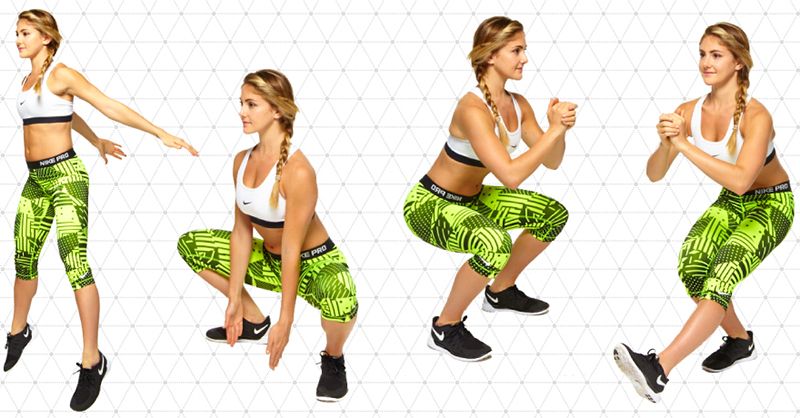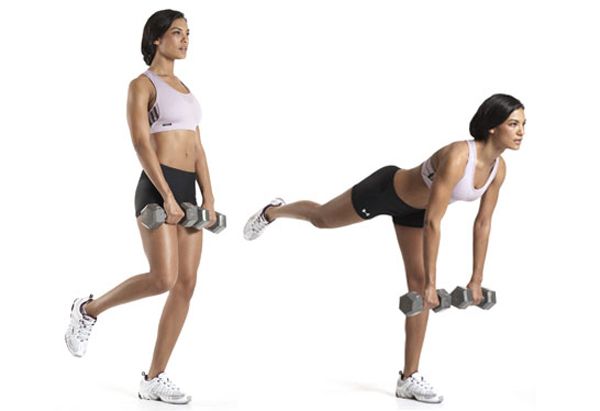Knee injuries are among the worst things that could happen to any active person as they often take quite a long time to heal, and may never even get completely healed. Even worse, most serious knee injuries will continue to have a detrimental effect, later on in life, particularly as people grow older.
So if you haven’t yet had a serious knee injury, you’re in luck and you need to insure yourself by proactively protecting your knees against potential injuries. One of the best ways to do this is to strengthen the muscles that surround the knee joint through exercise. In fact, depending on the nature of the injury, strong surrounding muscles may take over much of the function of the knee and make physical activity easier in people who have already suffered knee injuries. The muscles you will have to target, specifically, are the quadriceps, hamstrings, gluteus maximus and gluteus medius, adductor and abductor muscles.
Squats (Front & Back)

Squats are probably the single most effective and easy to perform exercise particularly for people with healthy knees. Most squat techniques effectively target all the major muscles in the upper leg but you can vary the technique to place more emphasis on certain muscles:
Front Squat- Quadriceps
To place greater emphasis and tension on the quadriceps, you should do the front squat. You may perform the front squat by standing with your feet, shoulder width apart, head upright and chest puffed out. You may place your hands on your waist, or clasped beneath your chin. Push your butt out and lower your body until your butt is on a slightly lower level than your knees and return to starting position.
Back Squat- Hamstrings and glutes
To strengthen and develop the hamstrings and glutes, you could use back squats. These are performed using a technique which is similar to the front squat. You might want to use a rod to assist you at finding the right form. Balance this rod on your shoulders and then go down making a similar motion to the front squat. Ensure you keep your back upright. This will work your hamstrings and glutes.
Adductors
Back squats will work the most important hip abductor, the gluteus medius, but to work the adductors which are generally found along the interior of the hips and are responsible for drawing the legs inward, adjust your squat by placing your feet at a greater distance away from each other.
One Legged Deadlift- (Calves, hamstrings and glutes)

One-legged deadlifts are very effective because they work all the muscles found in the rear of the legs including calves, hamstrings and glutes. To perform them, bend over as if to pick an object off the ground and raise your leg, on the same side as the arm you reach over with, till it forms a 90-degree angle with your body.
Conclusion
These three exercises will help you build all the muscles surrounding your knees. Fortunately, most of these muscles have the potential to be really powerful so you if they’re properly developed, your lower body will be much stronger.
Having a fitness instructor to guide you might help you get the most out your workouts and if you would like to meet with one, we would be glad to connect you with someone you can trust. Please contact us at:
WhatsApp number: +971 56 58 30067 (Just send us code 2721 and we will get back to you ASAP)
Contact Us: Click here to send us your details or fill in the form below.
You can get in touch with us 24/7 and one of our experts will not only give you a free consultation but also help you pick out an appropriate male or female personal trainer to meet your needs. One-on-one personal training lessons are available in Dubai, Abu Dhabi, Sharjah, Ajman and RAK.
______________________________________________________________